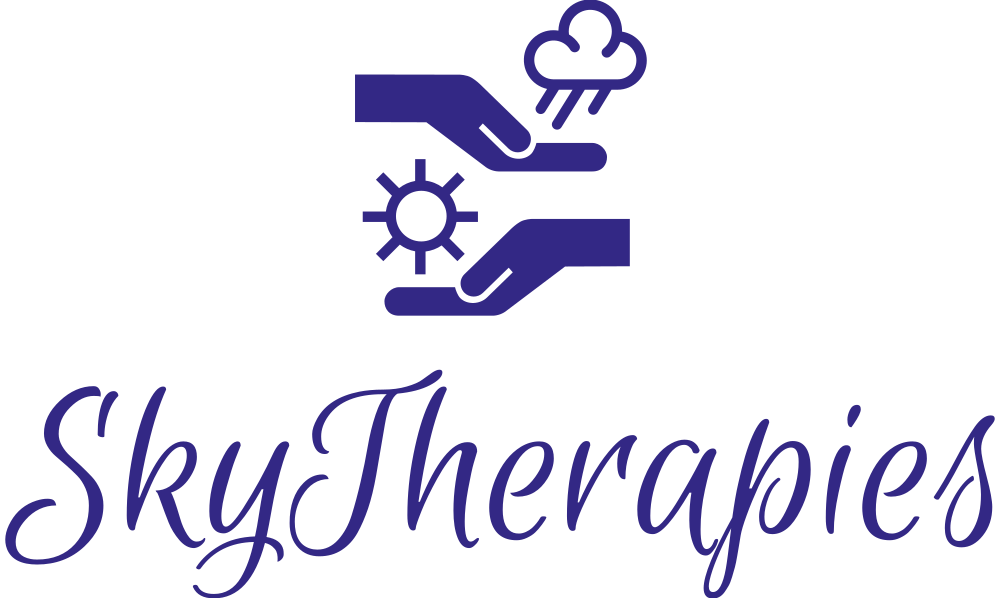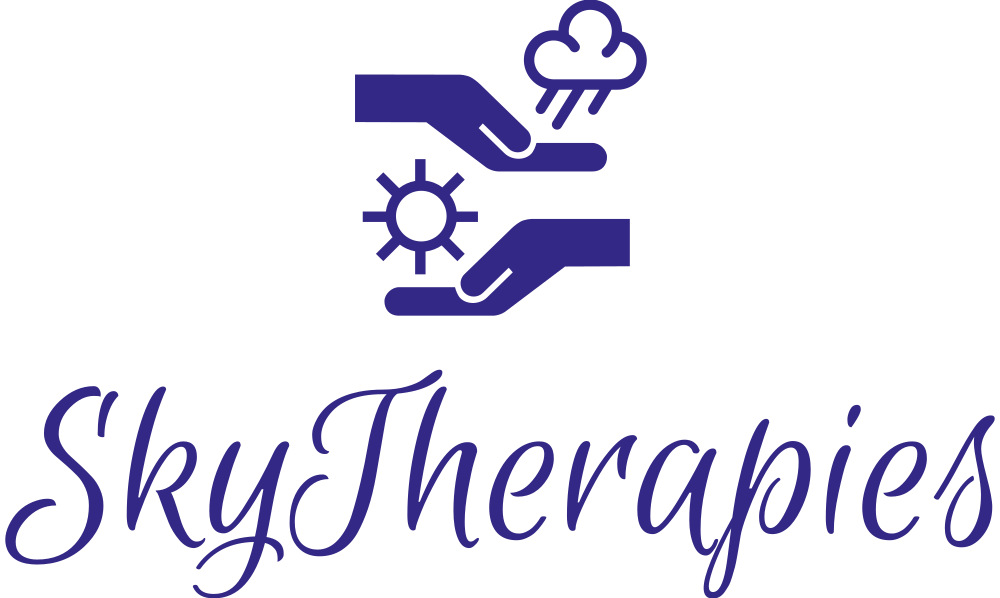Pain is a powerful and complex sensation that serves as a warning system for the body. It signals that something isn’t right, urging us to take action to protect ourselves. However, not all pain is created equal. Sometimes, the brain can misinterpret pain signals, leading to chronic pain or heightened sensitivity to pain. This is particularly true for individuals who have experienced trauma, anxiety, or long-term stress. Understanding how the body’s pain and danger signals work, and how they can be misinterpreted, is key to improving your overall well-being and finding effective relief.
At Sky Therapies, we believe in addressing pain from a holistic perspective—recognizing that emotional, physical, and mental health are interconnected. In this blog post, we’ll explore how pain and danger signals work, how they can be misinterpreted, and how therapies like Deep Brain Reorienting (DBR), EMDR, Brainspotting, Pain Reprocessing Therapy, and Mind-Body Approaches can help break the cycle of chronic pain and misperceived danger signals.
How Pain and Danger Signals Work
The experience of pain is primarily a result of signals sent from the body to the brain. When we get injured or experience physical discomfort, nerve receptors in the affected area send electrical signals to the brain. The brain then processes these signals, interprets them, and triggers an appropriate response—such as pulling away from a hot stove or seeking medical help for an injury. This process is essential for our survival, allowing us to protect ourselves from further harm.
Pain is also closely linked to the body’s fight-or-flight response, which is activated in situations of danger or perceived threat. When the brain detects a potential threat, it sends signals to various parts of the body to prepare for action—whether that means running away from danger or standing ready to confront it. This response is designed to keep us safe from harm, and it’s meant to be temporary. Once the danger has passed, the body should return to a state of calm.
However, what happens when the body’s pain and danger signals get “stuck” or misinterpreted?
Misinterpreting Pain and Danger Signals
In some cases, the body’s pain signals can become exaggerated or misinterpreted, leading to chronic pain or heightened sensitivity. The brain may perceive danger where there is none, and this false perception can lead to ongoing pain without an obvious physical cause.
Several factors contribute to the misinterpretation of pain signals, including:
-
Trauma and Emotional Stress
When someone experiences trauma, whether it’s physical, emotional, or psychological, the body’s nervous system can become dysregulated. Trauma can heighten the sensitivity of the nervous system, causing pain signals to be sent even when there is no injury or damage to the body. This is why people with past trauma often experience conditions like chronic pain, fibromyalgia, IBS, or chronic fatigue. The emotional and psychological stress of trauma can “reset” the pain system, leading to a cycle of persistent discomfort.
-
Chronic Stress and Anxiety
Stress and anxiety can also play a significant role in misinterpreting pain signals. When the body is in a constant state of stress or hypervigilance, the brain becomes more attuned to danger signals. This heightened state of awareness can cause pain signals to be amplified, leading to increased physical discomfort. Individuals who suffer from chronic stress or anxiety may experience tension in their muscles, headaches, or other physical symptoms that are a result of their emotional state, even if there is no direct injury.
-
Neuroplasticity and Pain Memory
Our brains have an incredible ability to adapt and reorganize themselves, a phenomenon known as neuroplasticity. While neuroplasticity is an essential tool for learning and growth, it can also contribute to the misinterpretation of pain signals. When someone experiences prolonged pain, the brain may “remember” the pain, even after the physical cause has resolved. This means that the brain may continue to send pain signals long after the injury has healed, leading to chronic pain syndromes.
-
Overactive Danger Response
Sometimes, the brain’s fight-or-flight response becomes overactive, even in the absence of real danger. This can occur in individuals who have experienced repeated stress or trauma, causing the brain to become hyper-sensitive to potential threats. As a result, the body may constantly feel on edge, with pain or discomfort manifesting even in safe or neutral environments. This overactive danger response can be exhausting, leading to anxiety, physical discomfort, and emotional strain.
How Misinterpreting Pain Signals Affects Your Health
When pain signals are misinterpreted, they can lead to several negative health outcomes, including:
-
Chronic Pain Conditions
Misinterpreting pain signals is one of the root causes of chronic pain conditions, such as fibromyalgia, arthritis, and back pain. These conditions can be difficult to treat because they don’t have an obvious physical cause. The pain persists because the brain continues to send danger signals, even when there is no injury to justify the discomfort. This ongoing pain can significantly impact a person’s quality of life, affecting their ability to work, engage in activities, and maintain healthy relationships.
-
Emotional and Mental Health Strain
Chronic pain that results from misinterpreted danger signals can take a toll on emotional and mental health. The constant discomfort can lead to feelings of frustration, helplessness, and anxiety. People may begin to feel like their pain is “all in their head,” leading to self-doubt and isolation. Over time, this can contribute to depression and a reduced quality of life.
-
Increased Sensitivity to Pain
When pain signals are continuously misinterpreted, the body becomes more sensitive to pain. This is known as hyperalgesia—an increased sensitivity to pain stimuli. What was once a mild discomfort may begin to feel more intense over time, leading to greater physical and emotional strain. Hyperalgesia can create a vicious cycle, where the more pain someone experiences, the more sensitive their nervous system becomes, amplifying the pain even further.
-
Decreased Mobility and Function
Chronic pain and misinterpreted danger signals can also result in reduced mobility and function. Individuals may avoid certain activities or movements because they anticipate pain, which can lead to muscle atrophy, joint stiffness, and a diminished ability to move freely. Over time, this can impact overall health, leading to secondary conditions such as poor posture, weight gain, and decreased cardiovascular health.
How Therapy Can Help Break the Cycle
At Sky Therapies, we specialize in helping individuals break the cycle of misinterpreted pain signals using a combination of Deep Brain Reorienting (DBR), EMDR, Brainspotting, Pain Reprocessing Therapy, and Mind-Body Therapies. These therapeutic approaches address the root causes of chronic pain, offering relief by reprogramming the brain’s response to danger signals and promoting healing in both the mind and body.
-
Deep Brain Reorienting (DBR)
DBR is a powerful technique that helps reset the brain’s response to pain and stress. By using specific interventions, DBR helps individuals release trauma-related pain memories and reorient the brain to a state of calm and safety. This approach can be especially effective for individuals who have experienced trauma or chronic stress and are struggling with misinterpreted pain signals.
-
EMDR (Eye Movement Desensitization and Reprocessing)
EMDR is an evidence-based therapy that helps individuals process and release emotional distress related to trauma. This technique is especially useful for people who experience chronic pain as a result of past traumatic experiences. EMDR works by helping the brain reprocess traumatic memories, reducing their emotional intensity and allowing the individual to break free from the cycle of pain and danger signals.
-
Brainspotting
Brainspotting is a therapeutic approach that helps individuals access and release deeply stored trauma, often related to chronic pain. This approach targets specific areas of the brain where emotional and physical pain is stored, allowing the individual to process and heal the root causes of their pain. Brainspotting can provide significant relief for those struggling with chronic pain that has no clear physical origin.
-
Pain Reprocessing Therapy
Pain Reprocessing Therapy (PRT) is a specialized approach that helps individuals reframe their experience of pain. By identifying and addressing the emotional and psychological triggers of pain, PRT helps individuals rewire their brain’s response to discomfort. This therapy is particularly beneficial for people who experience chronic pain without a clear physical cause, as it targets the neural pathways responsible for misinterpreting pain signals.
-
Mind-Body Therapies
Mind-body therapies, such as somatic experiencing, breathwork, and body-centered therapies, help individuals become more aware of how emotions and stress are stored in the body. These therapies encourage the release of physical tension and help the individual reconnect with their body in a healthy and supportive way. Through mind-body therapies, individuals can reduce stress, release stuck emotions, and reset their pain response.
Conclusion
Misinterpreting pain and danger signals is a complex issue that affects many individuals, especially those who have experienced trauma, chronic stress, or emotional hardship. However, with the right support and therapy, it is possible to break the cycle of chronic pain and restore balance to the body and mind.
At Sky Therapies, we specialize in therapies like Pain Reprocessing Therapy, DBR, EMDR, Brainspotting, Pain Reprocessing Therapy, and Mind-Body Approaches that can help individuals reset their nervous system, process emotional pain, and reduce chronic discomfort. If you’re struggling with chronic pain or misinterpreted danger signals, we’re here to help guide you through the healing process.
Reach out to Sky Therapies today to begin your journey toward pain relief and emotional freedom. Together, we can work to restore balance and bring lasting relief to your body and mind.





